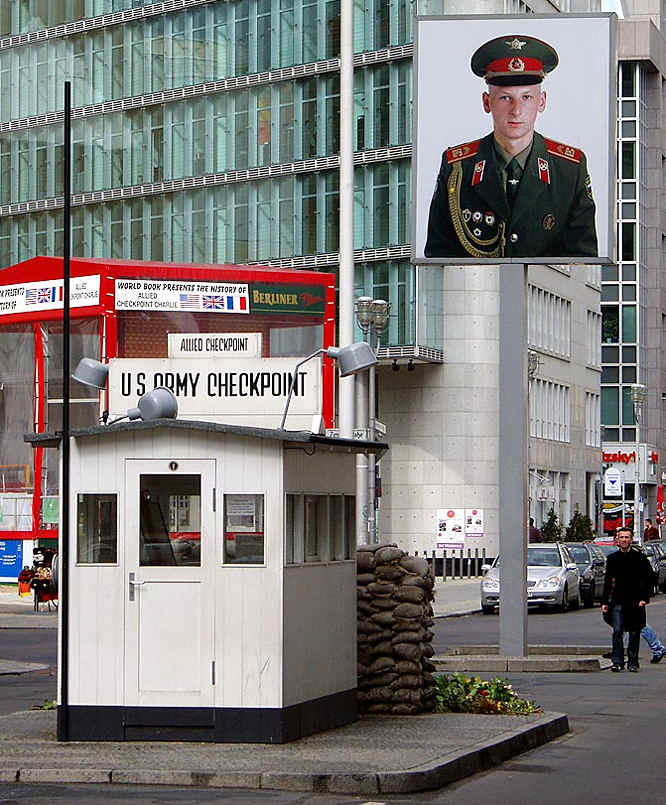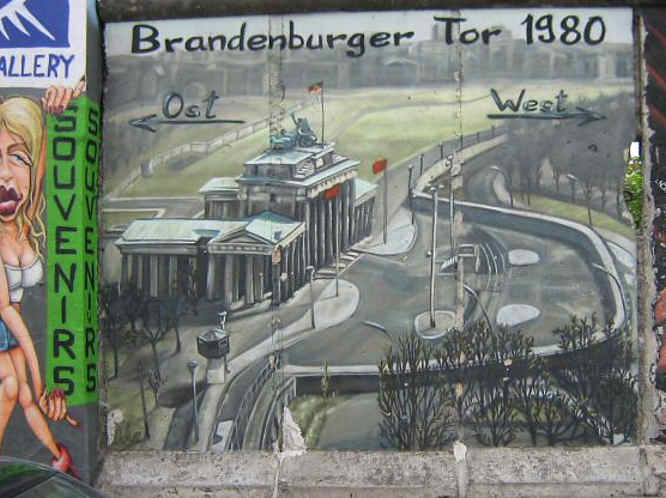Berlin Checkpoint Charlie on Kochstrasse
Checkpoint Charlie is one of the few things left in Berlin of the divided city. It was constructed by the Americans and erected on Friedrichstrasse. It was the third checkpoint built on the borders of West Berlin and called C Charlie, following the NATO phonetic alphabet.

The checkpoint was decommissioned after the fall of the Berlin wall in late 1989. Modern office buildings have been erected in recent years where the wall used to be. The course of the former Wall is now marked on the street with a line of bricks. What you see in the middle of the road is a copy of the check point booth.
The Wall Museum is also near by where you can see original objects from successful escapes, such as a hot-air balloon and remodelled cars. The texts of the exhibition who give you details about exhibition objects are in German, English, Russian and French. For 3 EUR you can also get an audio tour.
Entrance fee is around 10 Euros. The nearest Railway station is the U-Bahn Kochstrasse and the best bus is the Bus 129. Visit the museum early in the morning to avoid the queues and crowds. It is a great museum that is worth the high admission price.

Remains of the Berlin Wall in Bernauer Strasse
If you are coming to Berlin hoping to see the Berlin wall you will be very disappointed. New shops and office blocks have been built over its original location. Former killing zones are now landscaped green open spaces.
There are a number of shops selling tourist trash. I saw a page bookmark with a tiny piece of the wall in a plastic case at the bottom After the second world war, Berlin was divided into 4 sectors, defeated Germany was also divided up into 4 parts: an American, British, French and Soviet occupation zone.
The Russian authorities tried to annex the whole city in 1948 and started a blockade of the US, British and French sectors. The famous Berlin Airlift made sure that the people of Berlin in the American, British and French zones received necessary supplies. In May 1949 the blockade was lifted. In 1949 the Soviet part of Germany became the German Democratic Republic (GDR) with East Berlin as its capital.

The western zones became the Federal Republic of Germany with the capital Bonn and the allied section of Berlin became a separate enclave surrounded by East Germany. On August 12, 1961 the border around the Western sectors of Berlin was closed to try and stop East Germans fleeing to the more prosperous west.
Officially the East German Government said it was an antifascist protection barrier to defend the East against Western aggression. Over the next few years the barbed wire was replaced by a 3.6m high wall. 192 people were killed in an attempt to cross the border. On 9th November 1989, travel restrictions were lifted and within hours the border gates opened and people flooded into West Berlin
At present you can still see a stretch of the wall at Bernauer Strasse near Ackerstrasse. The place is called 'Gedenkstatte Berliner Mauer'. The nearest Railway station is S-Bahn: Nordbahnhof and Bernauer Strasse. There was originally a line of apartment blocks on the eastern side of Bernauer Strasse. After the wall went up these buildings were used as conduits for escape.
The East German authorities had them dismantled and replaced with ano mans land controlled by guard towers and machine gun emplacements. You can still follow route of the Wall as the City council has marked its location by using different-colored concrete, or a dual line of bricks placed in the ground. In some locations they have erected plaques that read 'Berliner Mauer 1961-1989'.
Travel books

